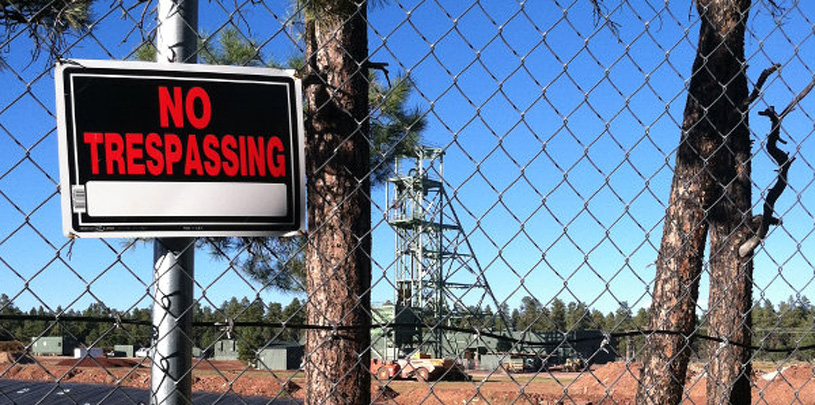
Facing a lagging uranium market, Grand Canyon’s zombie mines may be falling back into their graves. But their pollution problems remain alive and well—along with agencies’ refusal to require updated reviews or reclamation.
Citing market conditions, Energy Fuels Inc. on Friday announced plans to halt mining at a second Grand Canyon-area mine--the Pinenut Mine, located just north of Grand Canyon National Park. It is to be shuttered in August 2014.
This news comes after the company shuttered the Canyon Mine earlier in November, pending a federal district court ruling. It agreed to those terms with the Trust, the Havasupai Tribe and other plaintiffs who last year sued the Forest Service for allowing the mine to reopen absent Tribal consultations and additional environmental reviews.
On Friday the company also said that it plans to close the nation’s only conventional uranium mill. The White Mesa Mill, which turns regionally mined ore and radioactive waste into yellow cake, will close in 2014 and then reopen in 2015. When it reopens it will process radioactive waste exclusively.
Uranium mine closures like this aren’t new. In fact, they’re symptomatic of a broken policy framework that gives an economically marginal uranium industry too much free reign over public lands.
Four uranium mines near Grand Canyon were built and then closed in the early 1990s, owing to market conditions. Then, for two decades, they simply sat. Those intervening years allowed the mess to spread. At the Kanab North mine, soil sampled from as far away as 420 feet outside of the fence has an average uranium concentration that is more than ten times background concentration. At Pinenut, the shaft filled with nearly three million gallons of water.
Those years also saw scientists gain new understandings of the connection between mine-threatened aquifers and Grand Canyon’s springs. California condors were reintroduced to the area, new national monuments were designated and land use shifted toward recreation and tourism.
Then, as uranium market spiked in the mid-2000s, industry regained interest. One by one, agencies allowed the old mines to reopen—first the Arizona 1, then Canyon and Pinenut. (The fourth, Kanab North, was mostly mined out and not worth restarting.)
Now, one by one, they’re starting to go on “standby,” indefinitely—making a mockery of agency estimates that these mines are economically viable. Costs continue to take their toll on public lands, sacred sites, water, wildlife, and recreation values, while zombie mines lie in wait for another day that may never come.
A day must come when the current policy is changed— the irresponsible policy that allows polluting uranium mines to languish for decades without reclamation or renewed environmental review. As shown by Grand Canyon’s situation, current policies are broken and need to be fixed.
Markets aren't fully rational, and we're in a period right now, not just in uranium, we're seeing strong retreats of prices, we're seeing costs go up and a lot of companies and mines are having difficulties.The Trust agrees that uranium mining in Grand Canyon watersheds is an economically marginal endeavor. Decades-long mine closures in our region—and now these too--evidence that point. It also bears mentioning that no amount of money would enable clean up of mine-contaminated deep aquifers feeding Grand Canyon precious springs. That’s a result that neither industry nor public agencies can ensure against; it’s a risk that simply shouldn’t be taken.
Roger Clark and Taylor McKinnon are co-authors of this article.
A small victory in the legal case challenging Daneros uranium mine, near Bears Ears National Monument.
Read MoreGroundwater pumping at a uranium mine near the Grand Canyon will affect the canyon's springs, scientists says.
Read MoreA rally in Salt Lake City followed by a spiritual walk in White Mesa demonstrate the Ute community's determination to see uranium mill close.
Read More